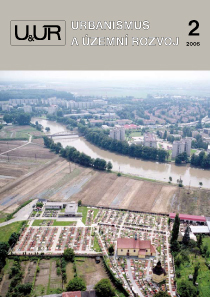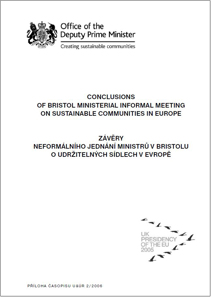

Comparing the Metropolitan Regions of Prague, Munich, Brussels, Milan, and Budapest, by Milan Körner
The article is a continuation to the debate about the population structure of the Czech Republic, Hungary, Belgium, Bavaria, and Lombardy. The cities mentioned in the headline are capitals of their countries or regions, of roughly the same population (most of them slightly over 1 million) while Budapest, being much larger, is included because of the similar characteristics of the surrounding region.
The areas of these cities’ administrative territories and, consequently, their population densities vary a lot. Yet there are even bigger differences in the structure of the regional agglomerations: Prague’s region includes just one town populated over 20,000 (Kladno, 70,000) while the other metropolitan regions comprise a number of towns populated over 50,000 (or even over 100,000, as is the case of Milan).
While the administrative delimitation of cities is obvious, the delimitation of metropolitan regions (according to World Urbanisation Prospects, The World Gazetter etc.) are very different form each other. What seems to be problematic and most varying is the delimitation of administrative units which very often include large surroundings of their centres, some of them scarcely urbanized. The composition of the elements of most metropolitan regions is to be changed substantially.
The Revitalization of the Former Garrison Houses in Uherské Hradiště, by Jaroslav Bičan, Aleš Holý, and Pavel Šupka
A brownfield type of land is a territory the utilization of which has caused contamination or devastation reducing its prospective use (a CzechInvest definition). It is not long ago when brownfields became an expression of rather frequent use in Czechia. Not only industrial premises but also a number of military objects were abandoned (barracks, airfields, hangars, bunkers, and so forth). The new owners of the military premises — such as municipalities, as is often the case — face many a difficulty when looking for their best possible utilization. The old zones are not attractive to developers, as the usual reconstruction costs are increased by the money needed for demolitions and environmental works. On the other hand, such brownfields are often located in interesting areas where no more available plots are to be found. The following article presents the experience of the municipality of Uherské Hradiště where the process of a step-by-step brownfield regeneration has been going on for five years now.
Theatre Stages in Factories, by Petr Dýr
To find an apt new function for a building which has to be reconstructed is a well known problem. The efforts to maintain the identity and authenticity of objects and their genius loci is frequently controversial to the needs of the permanently changing society. Yet, the conversion of the industrial heritage, intensifying since the 1970s, has brought many a new challenge. The preservation of monuments was for long ignoring the cultural value of historic industrial architecture, and there is still much less prudence in regard to such kind of monuments, with fewer obstacles to the creativity in the quest for their new use. Nevertheless, realizing the existence of brownfields and the need to cope with them, people learn that a new and original utilization of old factories may importantly increase the “added value” of formerly neglected territories.
The Stock of Land as a Part of the Socioeconomic Backing of Sustainable Development, by Milan Mackovič
Ever since 1990, the stock of land (in this contribution its “productive” part is dicsussed, i.e. agricultural land and forests) has been considered by physical planners as one of the limits to the prospective changes of the functional use of space. The economic and social potential of the stock of land is seldom considered, evaluated, and reflected in the physical planning documentation.
The newly worded Building Act involves the principle of sustainable development in physical planning. Such development, apart from environmental factors, is based on economic and social aspects. If the natural potential of the agricultural land and forests is not considered, the analysis of the sustainable development of space is not complete, especially in rural regions.
The potential of agricultural land and forests must be included in the sustainable devepment analysis of the socioeconomic factors of space, for the stock of land represents an integral and continuous part of the territory, offering a continuous potential of production. The use of natural processes and renewable resources (such as photosythesis, soil characteristics, and so on) is one of the basic preconditions of the sustainable development of the human society.
Physical Planning and the Assessment of Effects upon the Environment: The Why of Confusion and Possible Solutions, by Jüri Lass
The results of the assessment of the impacts upon the environment depend largely on the approach to environmental thinking. We know that the assessment of master plans was mainly instigated by environmentalists who were honestly afraid of the degradation of the natural environment. Environmentalists and planners usually represent different attitudes, sometimes extremely so. This contribution is not to blame anybody but to analyse some possible reasons of misunderstandings, through a rather unusual approach. I hope that such approach is neutral, enabling the grasp and the explanation of the varied opinions on the assessment and planning.
One may wonder why I ask such essential and existential questions again, as the regulation is clear and we have to implement it. However, I do so because there is a lot of confusion and misunderstandings about the assessment, and the estimation of the effects of master plans cannot be successful unless we clarify the reasons of such confusion. I wish that my article be a start of a wide discussion over possible solutions to the problems herewith indicated.
The Regeneration of Brownfields as a Response to the Overbuilding of City Surroundings, by Vlaďka Kirschner
In view of the wide overbuilding of city surroundings, the abandoned urban zones of industry (brownfields) are redeveloped in many a country now, such development being one of the priorities of sustainable development in spatial planning. This contribution brings some experience of Germany and the U.K., describing the situation in the Czech Republic too and defining the main problems the regeneration of brownfields is related to.